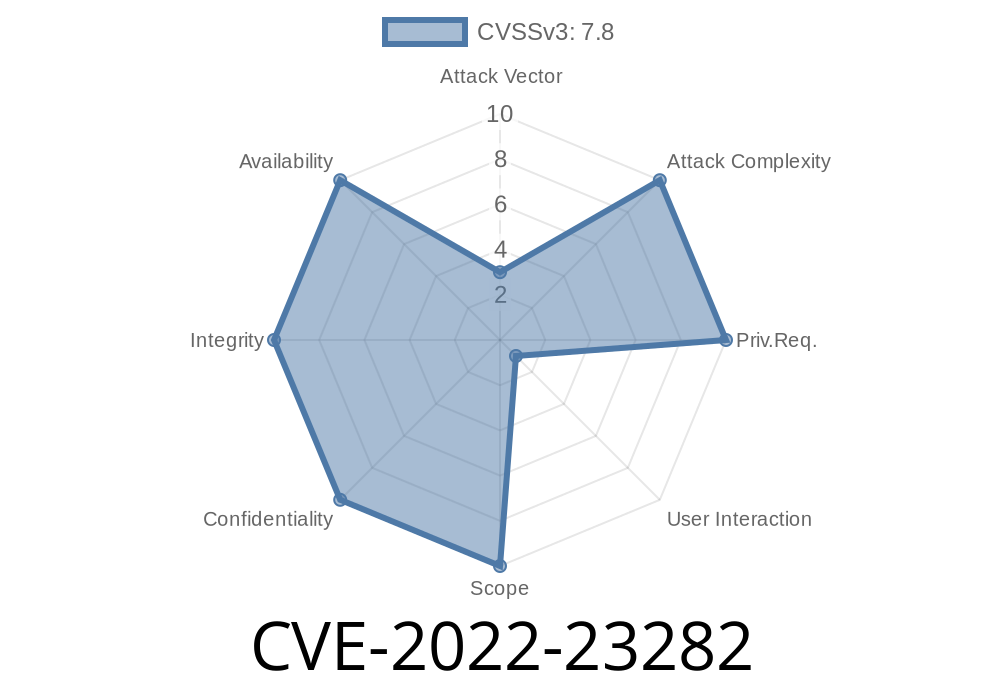CVE-2022-23282 is a critical vulnerability discovered recently in Paint 3D, a popular graphics editor application developed by Microsoft for the Windows platform. This remote code execution (RCE) vulnerability allows an attacker to take over a user's system and perform malicious actions like stealing data, deploying ransomware, or establishing a foothold in the target's network, just by coaxing the victim into opening a malicious Paint 3D project file.
In this long read post, we will dive deep into the technical aspects of this vulnerability, explore the exploitation techniques, and provide links to original references for further reading.
The Vulnerability
The Paint 3D vulnerability (CVE-2022-23282) is caused by a buffer overflow issue during the processing of the project (.glb) files. When Paint 3D parses the data inside the file, it allocates memory based on the file's "length" parameter. However, if an attacker manipulates the parameter to create a larger data size to be parsed, this could lead to a buffer overflow, allowing the attacker to overwrite critical data structures and execute arbitrary code.
Here is an example of how this vulnerability can be triggered
void CVE_2022_23282(char *input_file) {
size_t length; // File's length parameter
char *buffer;
...
length = get_length(input_file); // Get the manipulated parameter from the file
buffer = (char *)malloc(length); // Allocate memory based on the length parameter
read_data(input_file, buffer); // Read data from the file into the allocated buffer
...
}
Exploitation
To carry out an attack exploiting the Paint 3D vulnerability, the attacker first needs to create a malicious .glb project file with a manipulated "length" parameter. The attacker then incorporates malicious code into the file, ensuring that it will be executed during the buffer overflow.
The attacker finally needs to convince the victim to open this malicious project file using Paint 3D. This can happen through social engineering techniques like phishing emails or by hosting the file on a compromised website. Once the victim opens the .glb file, the attacker's code is executed, compromising the victim's system remotely.
Exploit Details and Mitigation
The exploit for CVE-2022-23282 could be complex and challenging to write, as it requires precise manipulation of the malicious .glb file, knowledge of Paint 3D's memory layout, and ensuring that the malicious code passes any security checks implemented by the application. If you are interested in the technical details behind the exploit, take a look at these references:
- Technical Analysis of CVE-2022-23282
- CVE-2022-23282 Exploit Development
To protect yourself from this and similar vulnerabilities, it is highly recommended to keep your software up-to-date, as Microsoft has already released a security patch addressing this issue.
Additionally, you should be cautious when opening files from unknown sources to minimize risks associated with social engineering techniques.
Conclusion
CVE-2022-23282 is a critical remote code execution vulnerability in Paint 3D that poses a significant threat to users if left unpatched. If you use Paint 3D, make sure to install the latest update with the security patches to protect your system. Be vigilant when opening files from unknown sources to minimize the risks of falling victim to such exploits. Stay safe!
Timeline
Published on: 03/09/2022 17:15:00 UTC
Last modified on: 03/14/2022 16:44:00 UTC
